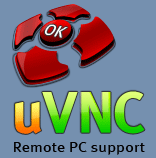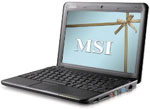Connecting Remotely with VNC
 One of my favorite software tools to use at Tech DC is VNC. If I have a client in Maryland, D.C. or elsewhere in the world when I am in Virginia, I can use VNC to take control of their computer in order to remotely diagnose problems or provide user training.
One of my favorite software tools to use at Tech DC is VNC. If I have a client in Maryland, D.C. or elsewhere in the world when I am in Virginia, I can use VNC to take control of their computer in order to remotely diagnose problems or provide user training.
VNC stands for Virtual Network Computing. It was originally developed by AT&T Labs in Cambridge, England. It is open source and free. There are many “flavors” of VNC that use the VNC protocol. My favorite for Windows is UltraVNC because it has the added feature of allowing file transfers between the two machines. VNC exists for Windows, Mac, and Linux.
VNC has two parts. There is the VNC Server which serves up the image. And there is the VNC Viewer which views and controls the server computer.
DynDNS.org
One limitation is that VNC requires a static IP. This is where DynDNS.org helps. Most home internet connections have a dynamic IP address, meaning that the IP address changes occasionally. DynDNS.org creates an address such as “yourname.dyndns.org” that is always mapped to your latest IP address, so it is as if you have a static home IP address.
UltraVNC’s Single Click
It takes extra time to setup, but Single Click is a great tool that can be built at UltraVNC. It is a small executable file that someone can click on in order for you to take over their computer. This makes it simple for the person you are connecting to. It also has the added benefit of not needing to configure their router to forward port 5900 to their computer. Single Click is only available for Windows computers.
All Free
VNC is free and DynDNS has a free service that is all you need. You can purchase other remote connection tools that are sometimes easier to set up such as GoToMyPC. But if you can configure them, VNC and DynDNS should provide everything you need to connect to remote computers.

 The current model that most people are excited about is the
The current model that most people are excited about is the  We’ve been researching the possibility of corporate and AAA discounts with the new iPhone 3G. Because the iPhone 3G does not have a profit sharing arrangement between AT&T and Apple like the original iPhone did, it should be treated as other phones offered by AT&T. And there are online reports backing up claims that AT&T is offering discounts. One source showed me his ordered Family plan that he got a 23% discount through his corporation. This applies only to the service, not the phone itself. But when calling AT&T directly, we were told that no discounts are possible.
We’ve been researching the possibility of corporate and AAA discounts with the new iPhone 3G. Because the iPhone 3G does not have a profit sharing arrangement between AT&T and Apple like the original iPhone did, it should be treated as other phones offered by AT&T. And there are online reports backing up claims that AT&T is offering discounts. One source showed me his ordered Family plan that he got a 23% discount through his corporation. This applies only to the service, not the phone itself. But when calling AT&T directly, we were told that no discounts are possible.